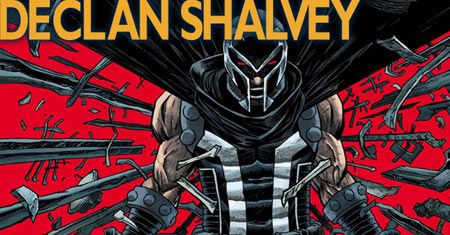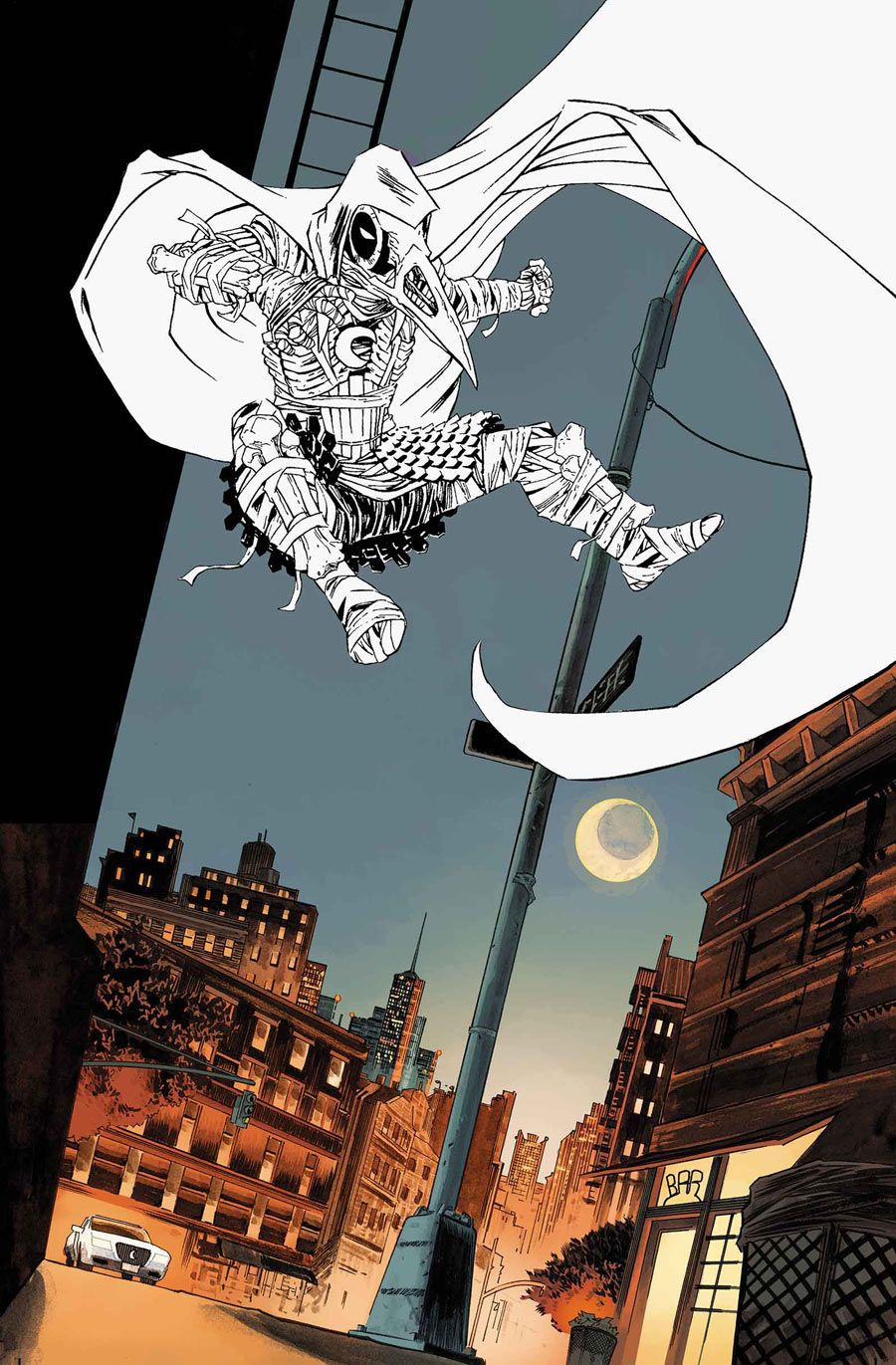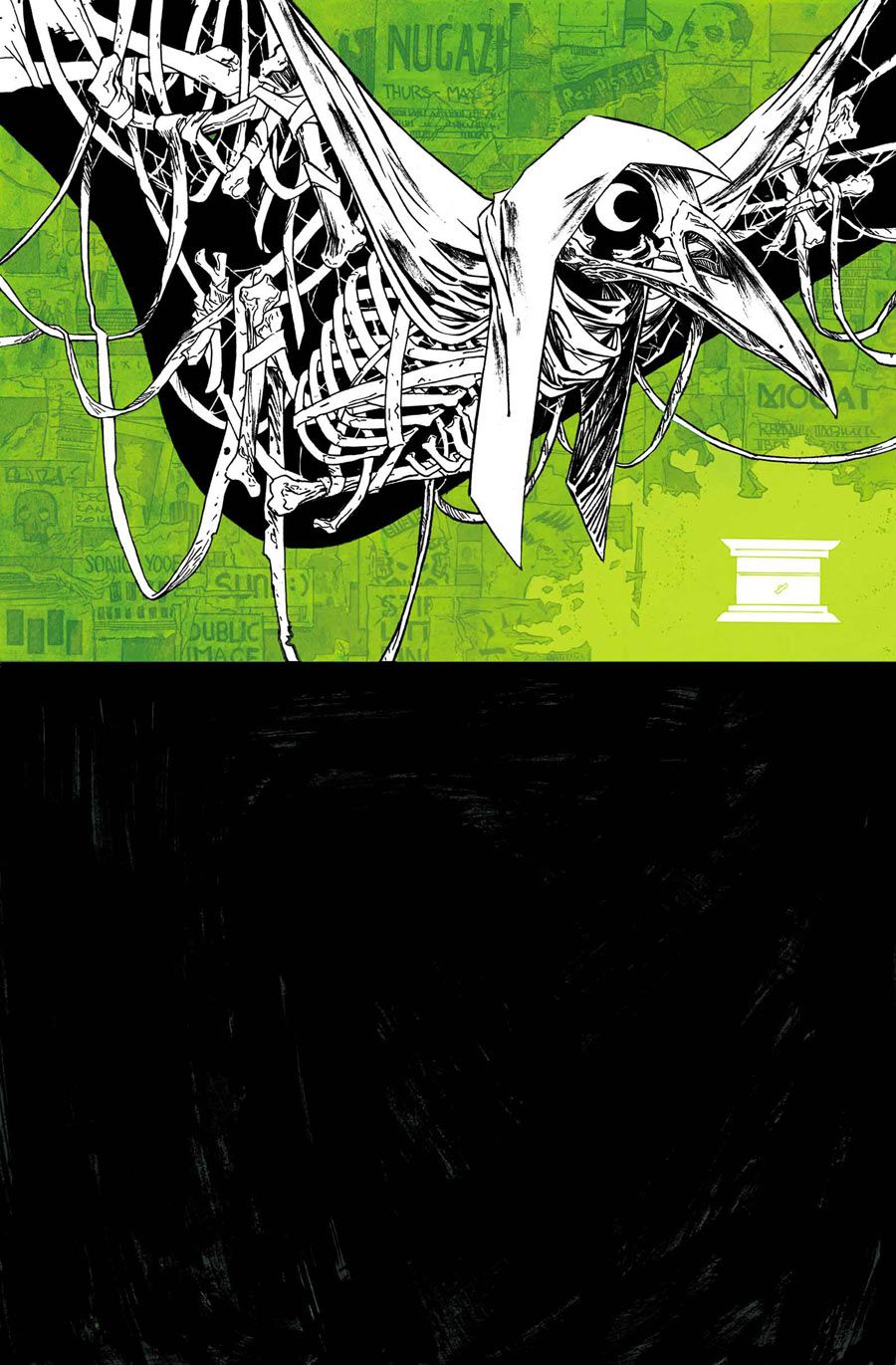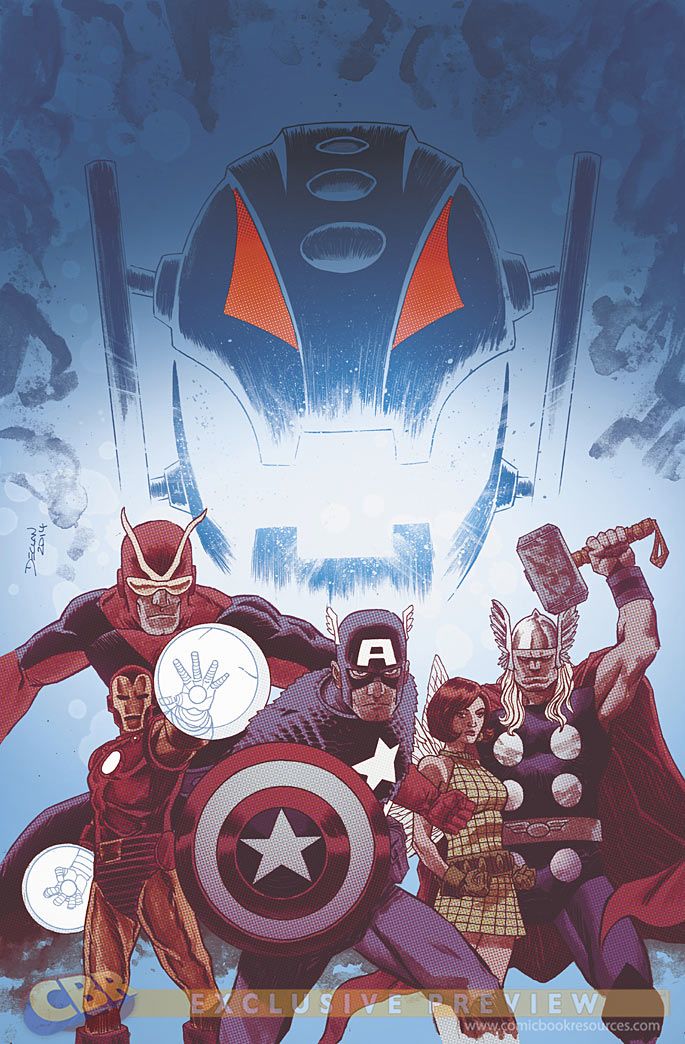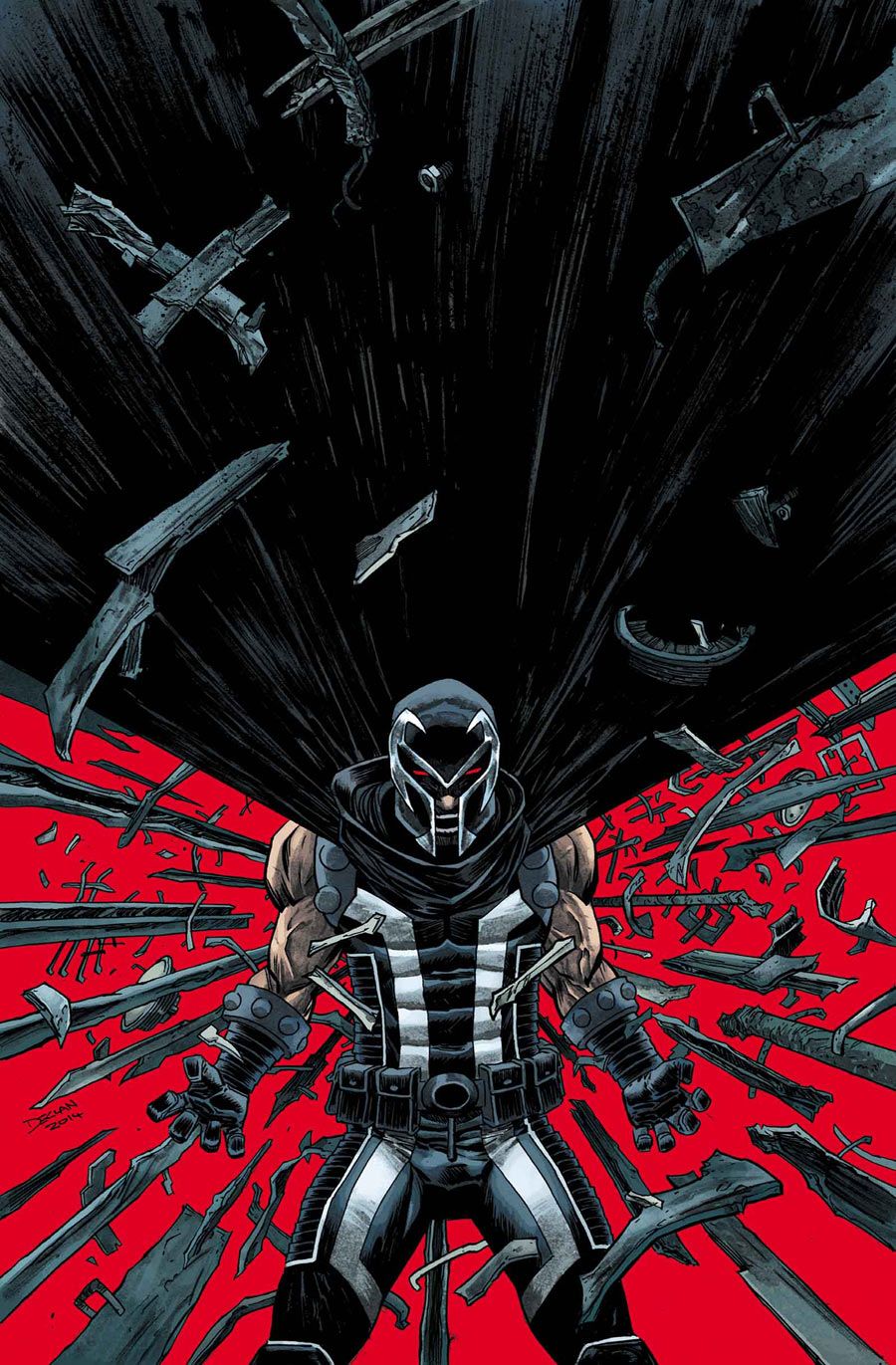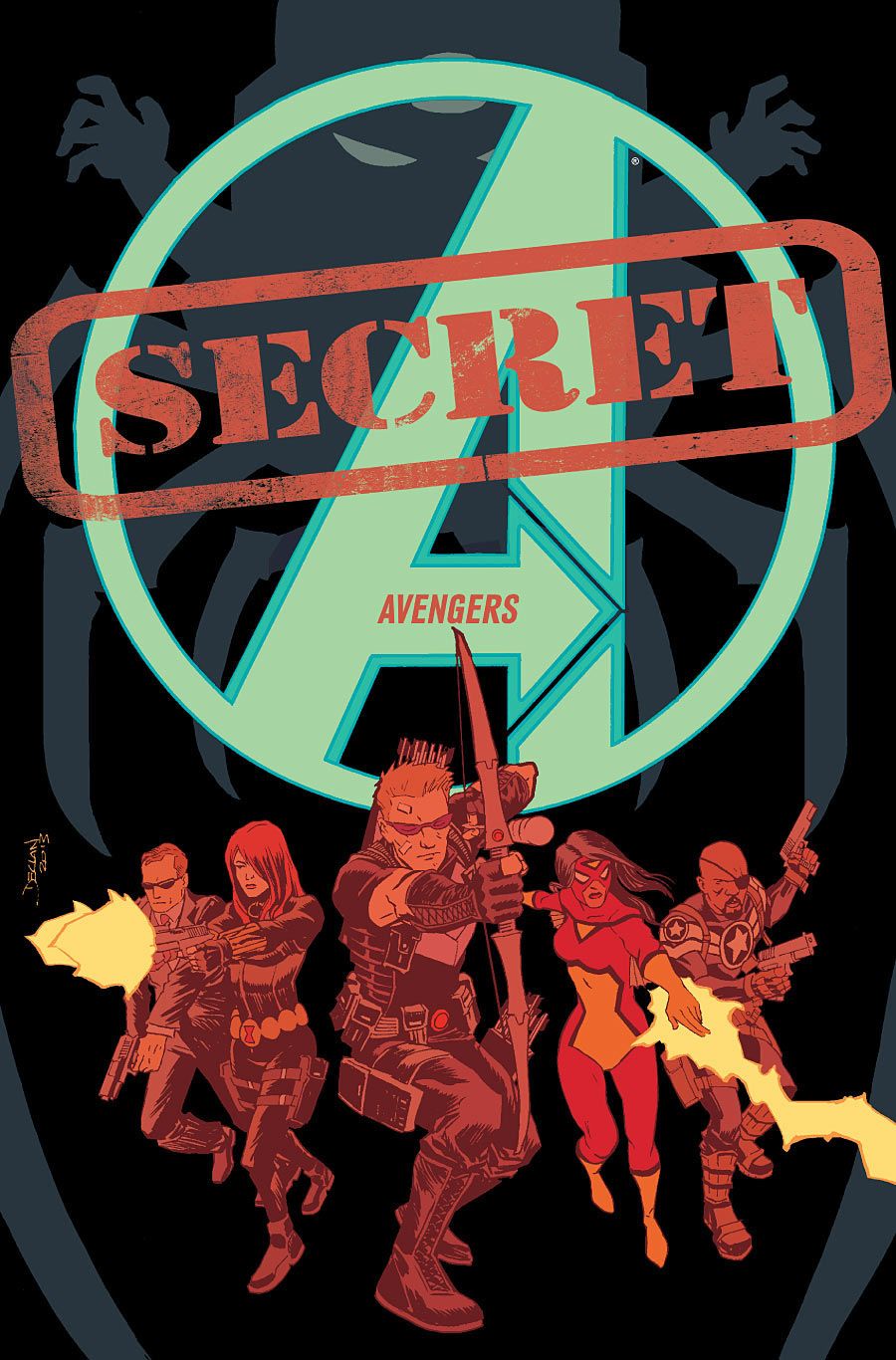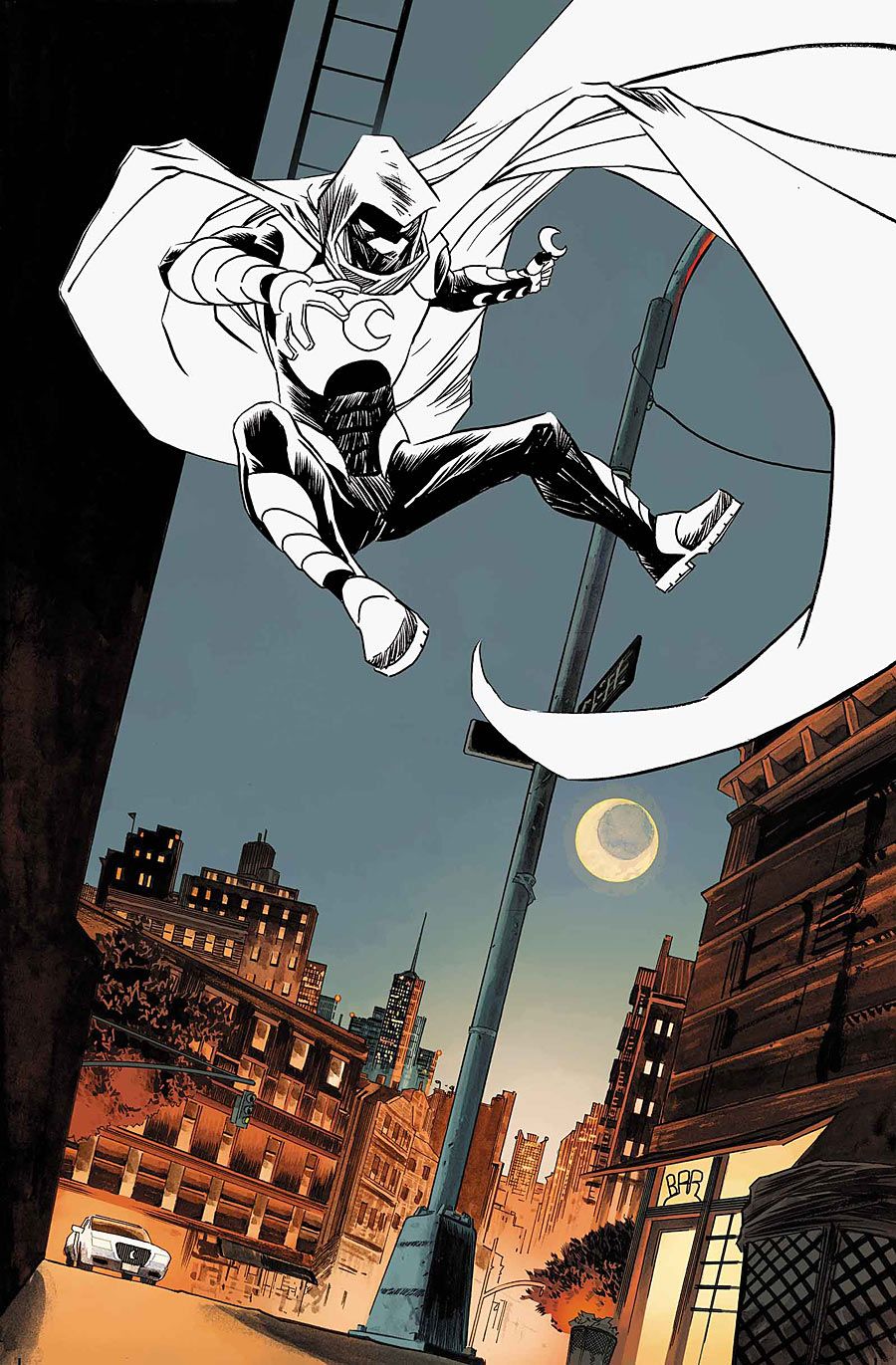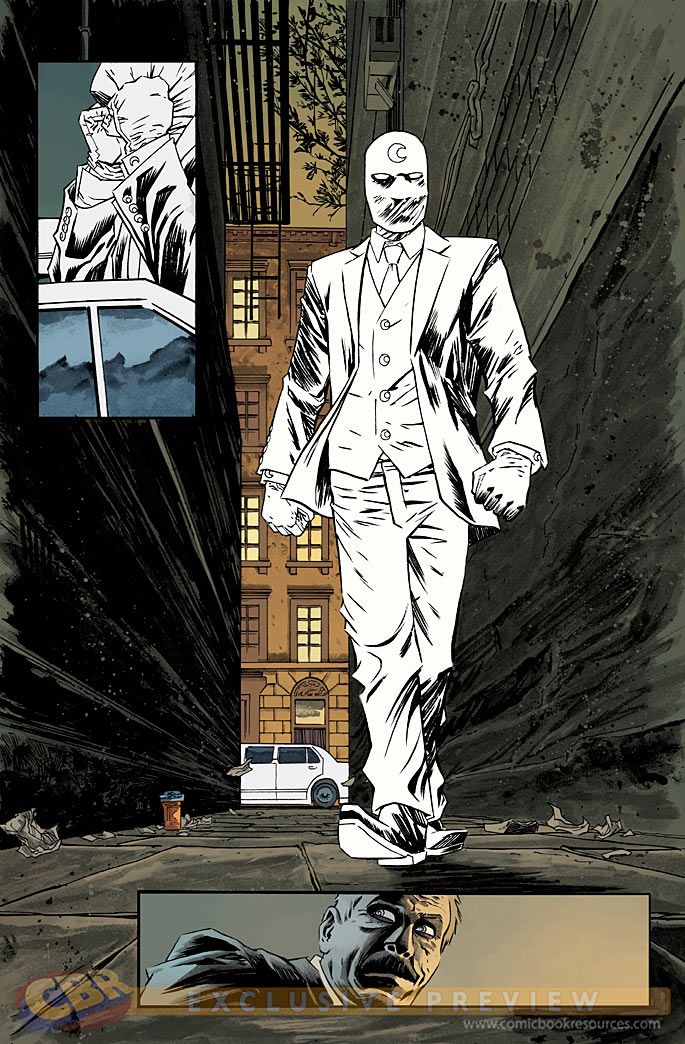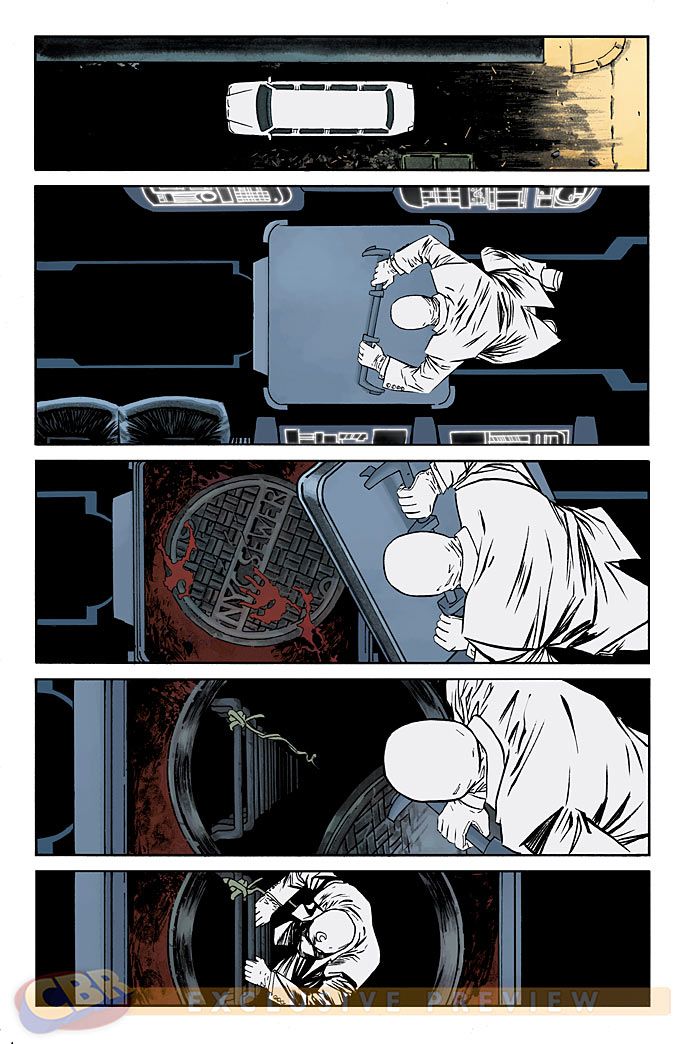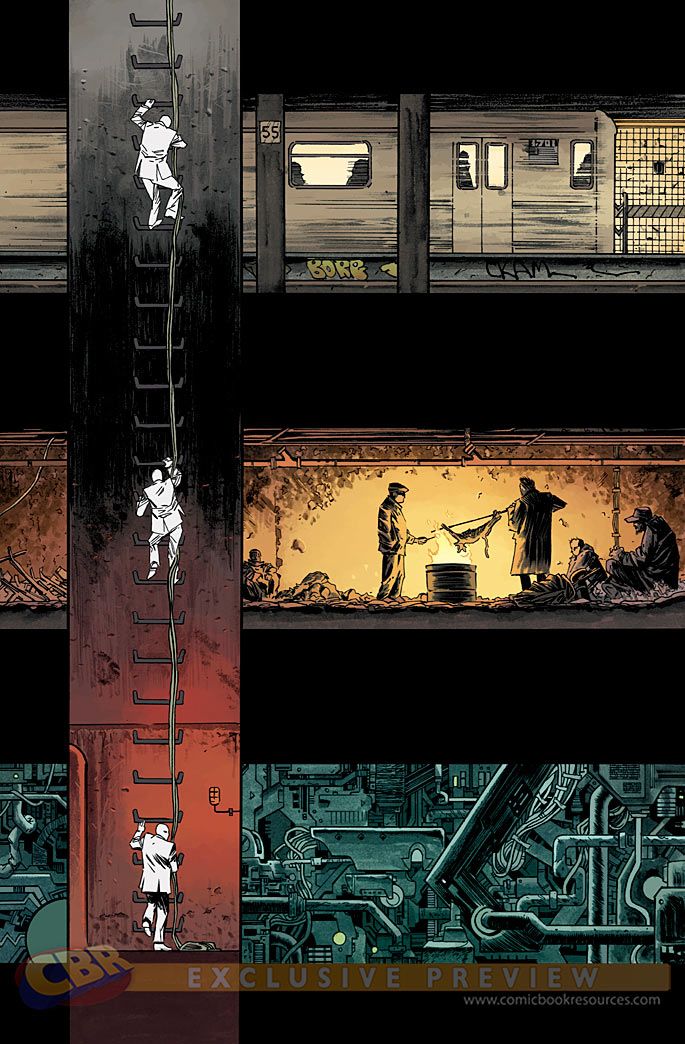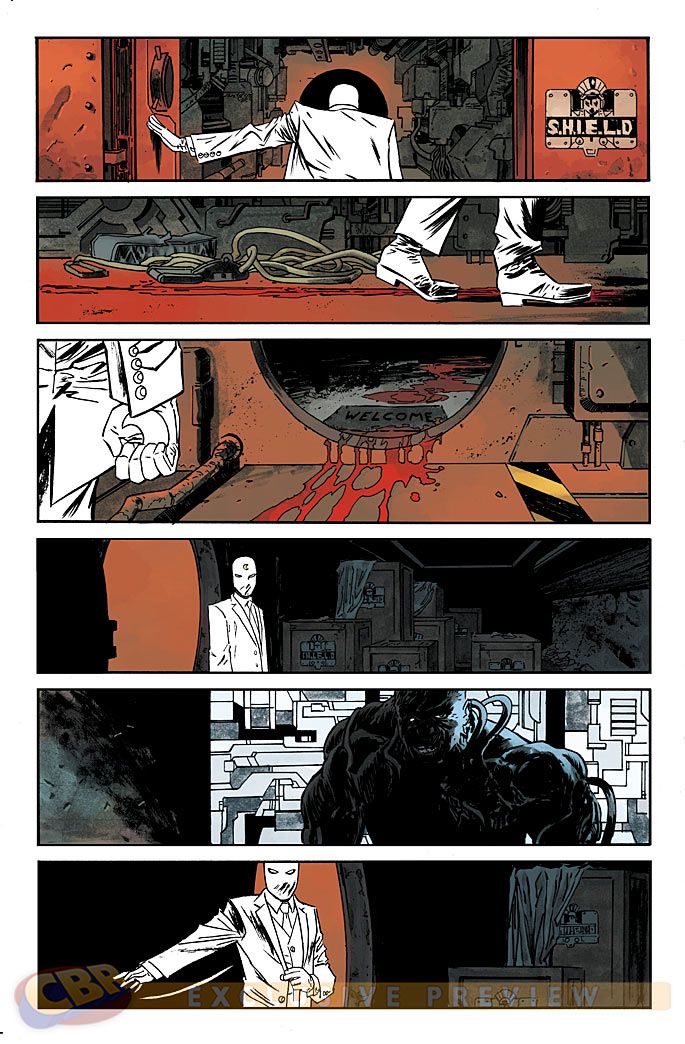Welcome to the CBR SUNDAY CONVERSATION, a weekly feature where we speak in-depth -- and at-length -- with some of the most interesting members of the comic book community. These discussions run the gamut in terms of topics, from current projects to classic stories, talking trends, tastes and wherever else the conversations lead.
This week we return to our conversation with artist Declan Shalvey, still hard at work on Marvel Comics' forthcoming "Moon Knight" series. Previews already hint at an evolving appearance for the mystical detective, a key component of writer Warren Ellis' character study. For his part, Shalvey continues to experiment, as much a necessity for Shalvey the career-oriented artist as it is for Shalvey the critical comic reader.
CBR SUNDAY CONVERSATION: Declan Shalvey, Part 1
In today's conclusion of our two-part talk with Shalvey, we discuss the importance of diversity and variety in comic art -- and everything that entails. It's not simply a question of equal representation. It's the desire to never get bored.
CBR News: It's clear that you like to challenge yourself as an artist, that you're very driven. In a healthy way.
Declan Shalvey: Thanks, man. Though too much drive can be unhealthy, believe me.
In the evolution of your own skill set, are you consistently looking forward, or do you ever find yourself looking back and saying, "Less of that." Is it ever reactionary?
Now and then I'll look back. I feel you need to in order to stay honest and critical about your work. If anything, it's a little easier to do with a bit of distance. I've seen how as I was developing, I'd embrace a technique, practice it, utilize it, then eventually over-use it to death. I would go mad with a new technique. Eventually I would look back and realize that I'm not using a technique in the right places which is far more important than using it in every place. I've done that time and time and time again in my career, but I learned to get past it by trying to be continuously critical of my work and re-evaluating it. It can be hard, as comics are a tough slog; it's hard to find the time to really pick your work apart. It helps having a brutally critical friend (or girlfriend in my case) to help you catch these things. An artist isn't going to benefit from living in a bubble. That's why I get frustrated when I hear of comic creators saying they don't read comics. If anything, I try read as much as I can; I want to see what's new, what's innovative, what's exciting, etc. That's going to push me to be better than I am. Living in a bubble will only make you complacent I feel, and complacency is the death of any art.
EXCLUSIVE: Warren Ellis Gets "Really Weird" with "Moon Knight"
How much do you think about the kind of artist you'd like to be versus the kind of artist they'd like you to be? Whoever they is.
Style's bollocks, man. Too many artists are too obsessed with achieving a "style." They concentrate on what the product looks like rather than how it's made. The snazziest looking car isn't necessarily the best one right? (disclaimer: I know NOTHING about cars). I think the key is as you said; voice. A singer, a dancer, a painter, etc., has a voice. As a comics artist, you're telling a story -- what type of story do you want to tell? A blockbuster action flick? An indie move? A rom-com movie? In learning and studying the craft, you will find your voice. Aiming to be marketable and all that, I dunno, it's a waste of time I feel. I mean, I'm lucky that I can do a Vertigo story one month and a Marvel story the following month and it still works. It's not by design; I love superheroes and I love non-superheroes. A creator told me once he was amazed that I was working at Marvel as he didn't see "mainstream" comics being into my work (it wasn't an insult on his part; it was a compliment). So, I feel lucky I've done both and not been pigeon-holed. That was pure accident though. I also feel lucky as I've never been hired to work on a project that meant doing work that was not representative of how I want to draw. Every project I've worked on, I've always drawn the way I wanted and have never had to mimic a style or another artist. It's all been me, for better or worse.
I find myself looking at artist friends on various projects and sometimes get jealous. But, I look at my own career and the books I've gotten to do and I realize I've worked on some of my favorite books. I read "Northlanders" as a fan before I got to work on it. "Conan", "The Massive," "Deadpool," I genuinely enjoy those books that include some of my favorite artists, and I've been on those books too. That's helped me realize I very much am the type of artist I want to be. I get asked to work on projects I'd love to work on. I'm so glad it worked out that way. Man, I'm such a gobshite.
Who isn't a gobshite? I agree with you on that question of style and substance and which matters more, but style emerges all the same. It's inescapable. There's something residual that isn't just a function of, well, function. Do you have perspective on what works or doesn't work and where you fit into that on a purely aesthetic level? Even if that's not your focus?
The fact that I could be on a mainstream Marvel book, I think, is pretty crazy. That would not have happened fifteen years ago. I would say maybe Joe Quesada started it at Marvel by hiring less obvious artists on superhero books, but for a while now they're way more open to more diverse stuff. I think it's way better for mainstream comics. I also think that more women are way more likely to be reading books that look like the way Marvel are doing books right now, because a lot of women aren't into that traditional, generic superhero style that men have mostly been into. In my experience, women are into a wide range of stuff, whereas a lot of guys our age were raised on that established "superhero" look. You kind of learn to get into that Jim Lee school of -- and this is no knock against Jim Lee; he's amazing -- but I find that a lot of males really got into that style, and developed tunnel vision as regards what "comic art" should look like.
When I was a kid I definitely had a How To book on superhero art very much informed by Jim Lee's style, and that style alone. That was the manual. That was "Gray's Anatomy" for super heroes. And there were others for cartooning, as in comic strips and animation, with a clear distinction between the two.
Yeah, it's kind of like reading comics, you're training yourself to like that style. Whereas a lot of young girls were put off by it; by everything looking the same. And in fairness it largely does look all the same. I definitely don't want to generalize. If anything it's more of an insult to guys. We often have a very adolescent view toward artwork. "That's not the way Superman's supposed to look!" It's a very small, very '90s way of looking at it.
And sadly it's mainly, predominantly, what guys like that informs what the mainstream is.
Yeah. Simply because we're in a position of power to point to what that is.
That's a concern, foremost, in terms of equality, but if we take your thesis into account, it's also a knock to pluralism and variety. Which is maybe the most vital element in any art. A point of view. I mean, how important is that to you as someone who both enjoys and works in the medium.
Hugely. The more one demographic looms over the other, the more narrow our field of vision becomes. Diversity in background informs diversity in opinion leads to diversity in thought leads to diversity in art which leads to more interesting and challenging art, no matter the medium.
There are differences in taste. When I went to art college, I could point out a drawing that a man did or a drawing that a woman did. All the guys seemed more obsessed with structure and building a figure. In blocks. Like those How To books we mentioned. Big on angles. The stuff the women were drawing had way more emphasis on shape. They were way more aesthetically pleasing even if the construction might get warped or weird. But it wasn't about legs as attached to knees as attached to shins, as in bits. They saw the overall form and drew that. For the guys it was all a collection of harsh angles and blocks, not nearly as pleasing aesthetically. To me, a perfect amalgamation would've been both. Now, that wasn't all the time, but I'd say a good 95% of the time you could tell, just speaking of those formative years in figure drawing.
Some might argue that cliches are cliches for a reason, that this predominant male style we've been talking about came about for a reason and has remained popular because it appeals to most readers. Is there any merit at all in that line of thinking?
No. You know, I used to say the same thing; "stereotypes can be true." For example I'm Irish and I'm fairly repressed in a lot of ways, am affected by the guilt/shame-centric Catholic upbringing I had in school, am usually the last person standing at the bar, at a party/convention, etc. I'm very aware I propagate that stereotype. Now, is that because I'm born like that? No, a lot of it is based on my upbringing and the culture around me, which has informed the stereotype. So, while stereotypes can be true, it doesn't mean they're absolutely nor inherently true, and that's a huge distinction. They are not something we're born with, they're something that's superimposed upon us, and a lot of us adapt to accommodate them. I kinda stop saying that now (that they can be true), as I feel it somewhat validates the existence of said stereotypes, and that's not helpful. Growing up in Ireland, I didn't know any girls who were into comics; that was my experience, so it would inform the cliche. But, that is one person's experience and just because it was my experience, it doesn't mean it's everyone's experience. I would say there definitely seemed to be less when I was younger, but I've been noticing at more and more shows that more and more women are attending shows, and my girlfriend [Jordie Bellaire] who is a colorist is getting a lot of queues with a lot of women in them. I think there's been more representation of women in recent years, and it's definitely helping to change the zeitgeist, but deciding not to look at something from a narrower point of view will also help.
Ellis, Shalvey & Bellaire Put a New Face on "Moon Knight"
Antony Johnston posted a really interesting article recently about how the games industry have been marketing their products and there would seem to be a lot of parallels to comics. The market has been appealing to a certain demographic and while that demo has been buying, that demo has continued to be marketed to. Marketing to one specific group does not encourage other groups to engage, and that lack of engagement is used to justify the marketing, rather than questioning it.
That predominant male style became popular predominantly with males. The more that style took over, the more unappealing the genre becomes to people outside that specific group. A more diverse range of styles can only attract a more diverse range of readers.
Let's say that the ratio of women to men in the comics industry was closer to 50/50. That's a fairly broad hypothetical, I understand, but how do you think it would affect the comics being made and the audience reading them?
I think it would improve dramatically. It would open the doors for a lot more different types of art and not appeal to the nostalgic, genericstyle that a lot of fans are obsessed with. I've noticed at Marvel, that the amount of interesting, innovative artists has risen in the last few years, and I think that has a lot to do with the amount of women working in editorial. I think a lot of men have a certain idea of what a comic should look like (a hangover of our adolescent fandom), and a lot of women don't have those hang-ups, so haven't become institutionalized to that way of thinking. It's made the line at Marvel a lot more diverse and interesting, in my opinion. I've noticed a lot more female colorists coming up in the last three years and I think the craft of coloring has improved a lot in those years with many more different looks and approaches being attempted, instead of everything looking bronzed and airbrushed. The more women working in comics, be it editorial, as writers, artists, colorists, letterers, etc., will only help diversify the content more, making it a lot more open to readers of different tastes (no matter the gender or ethnic background), and a lot more progressive as an art form.
For more on Declan Shalvey follow him on twitter at @declanshalvey

